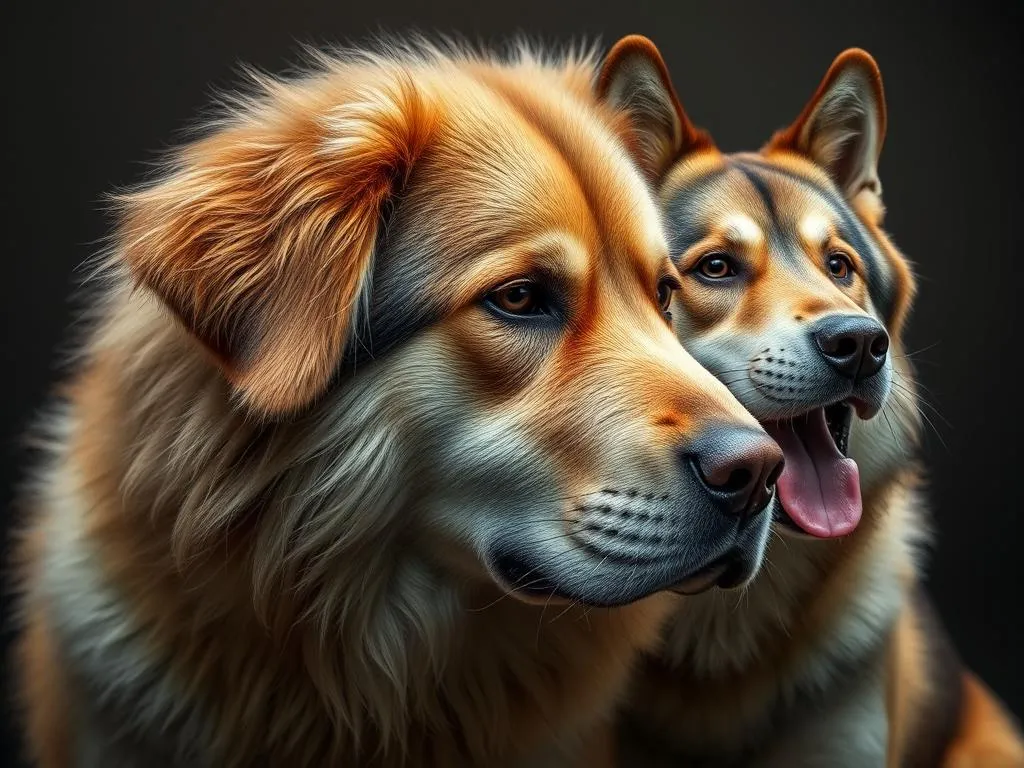
Understanding the dynamics of dog breeds and their sizes can be both fascinating and informative. When comparing dog breeds to their wild counterparts, such as wolves, it becomes intriguing to discover which breeds actually exceed the size of wolves. This article delves into the realm of dog breeds bigger than wolves, providing insights into the various breeds, their characteristics, and the factors that contribute to their impressive size.
Understanding Size Comparisons
Average Size of Wolves
To compare dog breeds to wolves, we first need to understand the average size of gray wolves. Generally, a gray wolf stands between 26 to 32 inches tall at the shoulder and weighs between 50 to 110 pounds. However, size can vary significantly among different wolf subspecies. For instance, Arctic wolves tend to be larger, while smaller varieties like the Mexican wolf can weigh as little as 50 pounds.
Measuring Dog Breeds
Dog breeds are categorized by size into five primary classifications: toy, small, medium, large, and giant. This classification helps potential dog owners understand which breeds might best fit their living situations and lifestyles. Giant dog breeds, in particular, are known for their remarkable size and weight.
Criteria for Classification
Defining “Bigger”
When we refer to dog breeds bigger than wolves, we establish parameters that focus on both weight and height. For a dog breed to be considered larger than a wolf, it must typically exceed the average measurements of a gray wolf, meaning it should stand over 32 inches at the shoulder or weigh more than 110 pounds.
Factors Influencing Size in Dogs
Several factors influence the size of dog breeds. Genetics play a significant role, as certain breeds are inherently larger due to their lineage. Additionally, nutrition and health can impact a dog’s growth, making proper diet and veterinary care essential for maintaining a dog’s size and overall well-being.
Dog Breeds Larger than Wolves
Giant Dog Breeds Overview
Giant dog breeds are defined by their impressive size and weight. These breeds not only require ample living space but also possess unique characteristics that set them apart from smaller breeds. Below, we explore specific dog breeds that are larger than wolves.
Specific Breeds
Great Dane
The Great Dane is one of the most recognizable giant dog breeds, known for its towering height. Males can stand between 30 to 34 inches tall and weigh anywhere from 140 to 175 pounds, making them significantly larger than most wolves. Their friendly and gentle temperament makes them great family pets, despite their intimidating size.
Mastiff
The Mastiff is another breed that surpasses wolves in size, with males weighing between 160 to 230 pounds and standing 27 to 32 inches tall. Known for their loyalty and protective nature, Mastiffs make excellent guardians. Their calm demeanor, combined with their immense size, often commands respect.
Saint Bernard
Originally bred for rescue work in the Swiss Alps, the Saint Bernard is a giant breed that can weigh between 110 to 200 pounds and stand 25 to 30 inches tall. Their gentle and affectionate nature makes them wonderful companions, especially for families with children. Their size and strength were crucial for their historical role in rescuing travelers.
Newfoundland
The Newfoundland is known for its impressive swimming ability and gentle disposition. Males typically weigh between 130 to 150 pounds and stand 26 to 28 inches tall. Their massive size, combined with a thick, water-resistant coat, makes them ideal for water rescue and family companionship.
Irish Wolfhound
The Irish Wolfhound, despite its name, is one of the largest dog breeds, often exceeding the size of wolves. Males can stand 30 to 34 inches tall and weigh between 140 to 180 pounds. These dogs are known for their gentle nature and are often described as “gentle giants,” making them excellent companions.
Characteristics of Larger Dog Breeds
Temperament and Behavior
Larger dog breeds often exhibit specific temperament traits. Many are known for their calm and gentle demeanor, making them suitable for family environments. However, they can also be protective and assertive, especially when it comes to guarding their home and loved ones. Socialization and training from an early age are crucial to ensure these breeds develop into well-mannered dogs.
Health Considerations
With great size comes great responsibility. Giant breeds are often susceptible to various health issues, including hip dysplasia, heart problems, and certain types of cancers. Their lifespan tends to be shorter than that of smaller breeds, typically ranging from 6 to 12 years. Regular veterinary check-ups, a balanced diet, and proper exercise are essential for maintaining their health.
Training and Socialization
Training and socialization are paramount for larger dog breeds. Their size can be intimidating, and proper training helps mitigate any potential behavioral issues. Positive reinforcement techniques are most effective, as larger breeds respond well to rewards and praise. Early exposure to various environments, people, and other animals is crucial for developing a well-adjusted dog.
The Role of Larger Dog Breeds
Working Dogs
Many larger dog breeds are utilized as working dogs due to their strength, intelligence, and trainability. Breeds like the Mastiff and Saint Bernard have historically served in roles such as rescue dogs, service animals, and protection dogs. Their size allows them to perform tasks that require strength and endurance, making them invaluable in various settings.
Family Pets
Larger breeds can also make fantastic family pets. Their gentle nature often makes them great companions for children. However, families should consider the space and resources required to accommodate such large dogs. Proper training and supervision are essential to ensure safe interactions between larger breeds and younger family members.
Conclusion
Understanding dog breeds bigger than wolves reveals fascinating insights into the world of giant dog breeds. From their impressive size and unique characteristics to their roles as working dogs and family pets, these breeds offer a wealth of companionship and protection. When considering a dog breed, it is essential to account for size and its implications on care, training, and overall lifestyle.
Frequently Asked Questions (FAQs)
What are the biggest dog breeds?
Some of the biggest dog breeds include the Great Dane, Mastiff, Saint Bernard, Newfoundland, and Irish Wolfhound.
Are there any dog breeds that are bigger than wolves?
Yes, several breeds like the Great Dane, Mastiff, and Irish Wolfhound exceed the size of wolves in both height and weight.
What are the best large dog breeds for families?
Breeds such as the Saint Bernard, Newfoundland, and Great Dane are known for their gentle temperaments and make excellent family pets.
Do giant dogs require special care?
Yes, giant dogs often require specific care, including regular veterinary check-ups, a balanced diet, and appropriate exercise to maintain their health.
How can I train a large dog effectively?
Utilizing positive reinforcement techniques, consistent training sessions, and early socialization are key components for effectively training a large dog.









